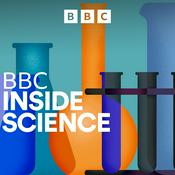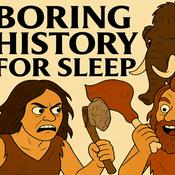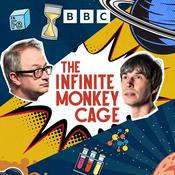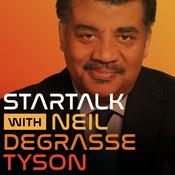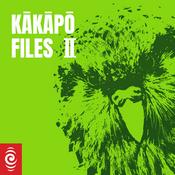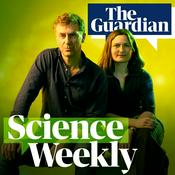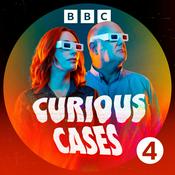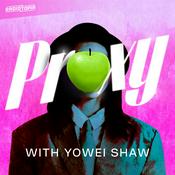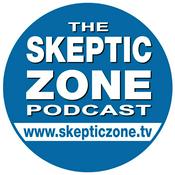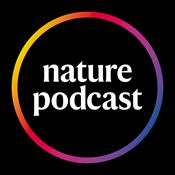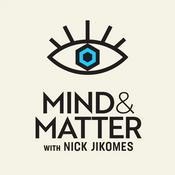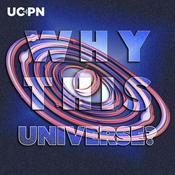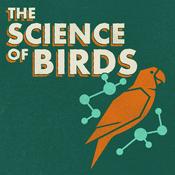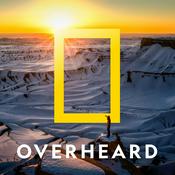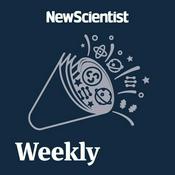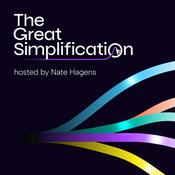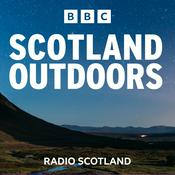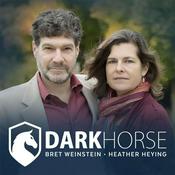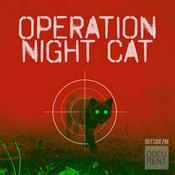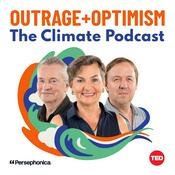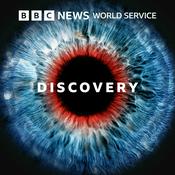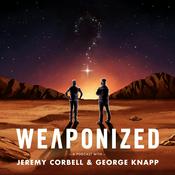34 episodes
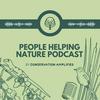
Inside Te Nukuao Wellington Zoo: How Modern Zoos Actually Work (EP34 with Karen Fifield)
12/12/2025 | 1h 9 mins.
Zoos haven’t always looked like they do today. The role of a "good zoo" is now about playing a crucial role in conservation and advocacy for animals - locally, nationally, and globally.In this episode, we sit down with Karen Fifield, CEO of Te Nukuao Wellington Zoo and President of the World Association of Zoos and Aquariums (WAZA), to unpack what modern zoos do to protect wildlife beyond what you experience when visiting.Karen shares how Te Nukuao Wellington Zoo contributes through wildlife hospital care, specialist breeding programmes, fieldwork, and community support - and why transparency, animal welfare, and long-term thinking are essential if zoos are to maintain public trust.We explore how zoos work alongside community efforts, why some species are kept off display, how global animal welfare standards are set, and the role education plays in helping people take meaningful action for nature.It’s a wide-ranging conversation about animals, people, ethics, and responsibility - and why good zoos are becoming more important, not less, in a changing world.Here are some other key topics we discussed:The role of storytelling and experience design when building zoo habitatsWhat Wellington Zoo does to support local community conservation effortsHow Wellington Zoo funds their important workThe very real threat of wildlife trafficking and why working together is critical in addressing itWhy it’s important to ‘think before you like’ social media content about wild animals interacting with humansHow to avoid visiting a bad zooWhy being more sustainabile in our everyday lives is a way that everyone can help wildlife conservationAnd much more…👩About Karen:Originally from Australia, Karen’s zoological career began at Taronga Conservation Society Australia and Zoos Victoria before she joined Te Nukuao Wellington Zoo in 2006. Alongside her Chief Executive role, she has also been the President of the Zoo and Aquarium Association Australasia (ZAA) and is currently the President of the World Association of Zoos and Aquariums (WAZA).In 2023, Karen was recognised as one of the Power 10 Zoo and Aquarium Blooloop Top 50 Influencers internationally, and in 2016 became a Member of the New Zealand Order of Merit MNZM for services to Business and Animal Welfare.Under Karen’s leadership, Te Nukuao has celebrated many achievements. In 2009, Te Kōhanga The Nest, a state-of-the-art veterinary hospital, opened. The Zoo was the first Toitū carbon zero-certified zoo in the world in 2013 and won the inaugural WAZA Environmental Sustainability Award in 2018.In 2024, Mana Whenua gifted the Zoo its te reo name, Te Nukuao Tūroa o Te Whanganui a Tara, which tells the story of the Zoo’s commitment to conservation and care for communities, wildlife and wild places.🔗Learn more:Website: www.wellingtonzoo.comWAZA website: www.waza.org🎙️Learn more about the podcast at www.conservationamplified.org

Protecting Alpine Wētā & Lizards (EP33 with Samuel Purdie, Southern Lakes Sanctuary)
28/11/2025 | 55 mins.
The smaller critters often get the least attention - yet they make up the foundations of life in our ecosystems.In Aotearoa New Zealand, invertebrates and lizards help recycle nutrients, disperse seeds, pollinate native plants, and support the whole food web. And they’re also some of the hardest animals to actually understand and protect.In this episode, we head back to the Southern Lakes Sanctuary for a round two with their herpetologist and invertebrate specialist, Samuel Purdie, who pulls back the curtain on what it really takes to look after species like the Southern Alps giant wētā (Deinacrida pluvialis).These rare alpine insects survive in harsh, often freezing landscapes and are now classified as nationally endangered.Monitoring methods like tracking tunnels, mark-recapture studies, cameras, and eDNA all tell different parts of the story. And without careful calibration, they can paint wildly different pictures.Sam also gives an inside look at the technical and physical reality of alpine fieldwork: night surveys on steep terrain, tents flooding, hazardous cliffs, and the huge challenge of getting reliable data. It’s an eye-opening conversation about some of the least visible yet critical species in the Southern Lakes ecosystem, and why paying attention to the small stuff matters more than most people realise.Here are some of the key topics we discussed:Why invertebrates and lizards are foundational to healthy ecosystemsWhat we know about the Southern Alps giant wētā, their alpine adaptations, and threats they faceHow climate change is shrinking alpine habitats and the consequencesWhy mice are a major, underestimated threat that should be included in Predator Free 2050The complexities of doing monitoring properly that are often overlookedThe physical and rugged reality of alpine fieldworkWhy inconsistent monitoring methods can mislead conservation effortsHow habitat modification and fire pose risks to lizard populationsPractical ways the public can helpAnd much more…🧑🦱About Samuel:Samuel Purdie is a herpetologist, science educator, and award-winning wildlife photographer from Rotorua. Sam holds a BSc in Zoology and Ecology and a PGDip in Wildlife Management from the University of Otago, and has recently completed his MSc focusing on native alpine lizards.A lifelong enthusiast for “creepy crawlies,” Samuel spends much of his time turning over rocks in search of New Zealand’s lesser-known species. As Biodiversity Projects Coordinator at Southern Lakes Sanctuary, he's involved in planning and monitoring for these cryptic native lizards and shares his striking wildlife photography and species knowledge across Southern Lakes Sanctuary's media channels.🔗Learn more:Southern Lakes website: www.southernlakessanctuary.org.nzInstagram: www.instagram.com/southernlakessanctuaryFacebook: www.facebook.com/SouthernLakesSanctuarySam’s website: www.samuelpurdiewildlife.com🎙️Learn more about the podcast at www.conservationamplified.org

Scaling Up Conservation in the Southern Lakes (EP32 with Paul Kavanagh, Southern Lakes Sanctuary)
14/11/2025 | 41 mins.
The Queenstown Lakes District is one of the most spectacular places on Earth - a picturesque landscape of mountains, lakes, and remote valleys where nature still feels wild.But beneath the beauty lies a conservation challenge: around 40 native species in the region are threatened or at risk of extinction.For decades, local communities have stepped up to protect these landscapes and wildlife, powered by volunteers putting in the hard yards. Now, Southern Lakes Sanctuary is helping to take that effort to the next level, supporting the mahi of six long-running conservation groups representing nearly 100 projects, landowners, businesses and hundreds of volunteers across 198,000 hectares, with plans to scale to 850,000HA over time.In this episode, CEO Paul Kavanagh pulls back the curtain on what happens when communities get the backing they need: skilled staff, smart tech, and funding that lets them go further together. From self-resetting traps to eDNA monitoring and beyond, this work is helping species like kea and mōhua return to the landscapes they once called home.Takahē, once declared extinct, now roam the Rees Valley again - a testament to what’s possible through collaboration.It’s a story of people, progress, and pragmatic action, showing how skilled professionals and passionate locals can work hand in hand to protect Aotearoa’s wildlife at scale.Here are some of the key topics we discussed:How six established conservation groups joined forces to form Southern Lakes SanctuaryManaging volunteer fatigue by adding professional support to complement volunteer-led mahiExpanding predator control from 6,400 to 13,000+ traps and removing more than 70,000 introduced animalsWhy measuring biodiversity outcomes matters more than counting traps and the role of robust monitoringThreatened species management across the project areaThe critical role of sustainable, long-term funding and partnerships with business and philanthropyHow AI-enabled, self-resetting traps and live mesh networks are transforming remote predator controlThe importance of working in urban and peri-urban areas as well as the back countryAnd much more…🧑🦱About Paul:Paul worked as a field biologist in Ireland after graduating with an Honours degree in Zoology from University College Dublin. He moved to NZ from Ireland in 2009 to further his career in conservation. Paul was General Manager of the Kiwi Birdlife Park, a wildlife park dedicated to preserving some of Aotearoa’s unique native species, for over 12 years before his appointment to his role as CEO with the Southern Lakes Sanctuary.🔗Learn more:Website: www.southernlakessanctuary.org.nzReport Takahē Sightings: www.southernlakessanctuary.org.nz/takahe-sightingsInstagram: www.instagram.com/southernlakessanctuaryFacebook: www.facebook.com/SouthernLakesSanctuary🎙️Learn more about the podcast at www.conservationamplified.org

NZ Bat Conservation: Data, Collaboration & Tech (EP31 with Mark Roper, The Bat Co. Lab)
31/10/2025 | 49 mins.
Most New Zealanders have never seen a bat, yet their presence signals the health of our forests.They’re our only native land mammals, quietly pollinating, eating insects, and supporting ecosystem balance. But with many areas still unmonitored and major data gaps in our understanding, their story remains half-told.In this episode, senior ecologist and bat expert Mark Roper joins us to share insights from years of fieldwork and research into Aotearoa’s long-tailed and short-tailed bats: how they live, where they roost, the challenges of collecting and processing data on them, and how community-led projects are uncovering new knowledge about where they’ve been found.Mark explains how emerging technology is transforming bat research - from low cost acoustic recorders paired with AI-based online classifiers that identify calls, to the National Bat Survey bringing communities together throughout the country. This episode uncovers a bigger picture: how collaboration, technology, and local action are helping us better understand and protect one of Aotearoa’s most overlooked native species.Here are some of the key topics we discussed:Population estimates of long- and short-tailed batsMajor threats including habitat loss, introduced predators, and light pollutionWhy bats are useful indicators of forest healthThe impact of wind farms and the emerging live curtailment approach that balances renewable energy with wildlife protectionHow affordable recorders and AI classifiers are making bat detection accessible for citizen scienceWhy we should consider requiring all bat data to be entered into an open national databaseAnd much more…🧑🦱About Mark:Mark Roper is a bat ecologist and founder of The Bat Co. Lab. Splitting his time between New Zealand and Sweden, he uses sound and technology to uncover what bats can tell us about the health of our planet. Mark leads the NZ National Bat Survey and works with researchers and communities worldwide to better understand where bats live, why they matter, and how listening to them can guide smarter conservation.🔗Learn more:Website: www.thebatcolab.co.nz Facebook: www.facebook.com/profile.php?id=61574762309249Instagram: www.instagram.com/thebatcolabLinkedIn: www.linkedin.com/in/markroyroperMore bat resources: www.doc.govt.nz/nature/native-animals/bats-pekapeka/resources-for-bat-workers🎙️Learn more about the podcast at www.conservationamplified.org

Finding A Career With Purpose (EP30 with Michelle Impey, Save the Kiwi)
16/10/2025 | 36 mins.
For many careers, purpose doesn’t extend much beyond cashing in the payslip.For Michelle Impey, she’s lived a career of purpose for 20+ years.As CEO of Save the Kiwi, Michelle has led the organisation’s evolution from a one-person funding distributor to a national team delivering measurable conservation outcomes for our national icon, the kiwi bird.In this episode, we talk candidly about building a career with purpose - the trade-offs and rewards, the culture that keeps people for decades, and how business skills like fundraising, operations and communications can drive real impact alongside fieldwork. You don’t necessarily need an ecology degree to help; you need intent, passion and persistence.Michelle also outlines the NZ conservation sector’s evolution. From early research into kiwi decline and DoC sanctuaries, to the community-led and iwi-led movement, Predator Free 2050, new technologies, and Save the Kiwi’s own incubation and crèche programmes - this is proof that collaboration can turn the tide for Aotearoa’s wildlife.Here are some of the key topics we discussed:Lessons from 20 years leading and growing a conservation charityHow New Zealand’s kiwi recovery efforts have evolvedWhat leading a purpose-driven organisation really looks like day to dayBlending business skills with conservation outcomesApplying entrepreneurial thinking to conservation challengesAdvice for anyone looking to start or transition into a purpose-driven careerFinding your place in conservation - from volunteering to leadershipWhy culture and long-term commitment matter in meaningful workAnd much more…👩About Michelle:For more than 20 years, Michelle Impey has been the CEO of Save the Kiwi, an organisation that’s on a mission to grow kiwi to abundance across New Zealand. Save the Kiwi works alongside iwi, conservation groups, and the Department of Conservation to raise awareness about the plight of the kiwi, how important the species is to New Zealand’s national identity, and what Kiwis can do to help their namesake.During her 20+ years in this role, Michelle has witnessed the explosive growth of iwi- and community-led kiwi conservation initiatives, which have in turn created more kiwi-safe habitat all over the country and a greater collective desire for kiwi to return to places where they once thrived. Michelle works tirelessly to ensure kiwi remain at the forefront of New Zealand's consciousness, reminding everyone around her that one person taking small action can lead to monumental change.🔗Learn more:Website: www.savethekiwi.nzFacebook: www.facebook.com/savethekiwinewzealandInstagram: www.instagram.com/savethekiwinzLinkedIn: ww.linkedin.com/company/save-the-kiwi🎙️Learn more about the podcast at www.conservationamplified.org
More Science podcasts
Trending Science podcasts
About People Helping Nature Podcast
Listen to People Helping Nature Podcast, Hidden Brain and many other podcasts from around the world with the radio.net app

Get the free radio.net app
- Stations and podcasts to bookmark
- Stream via Wi-Fi or Bluetooth
- Supports Carplay & Android Auto
- Many other app features
Get the free radio.net app
- Stations and podcasts to bookmark
- Stream via Wi-Fi or Bluetooth
- Supports Carplay & Android Auto
- Many other app features


People Helping Nature Podcast
download the app,
start listening.

